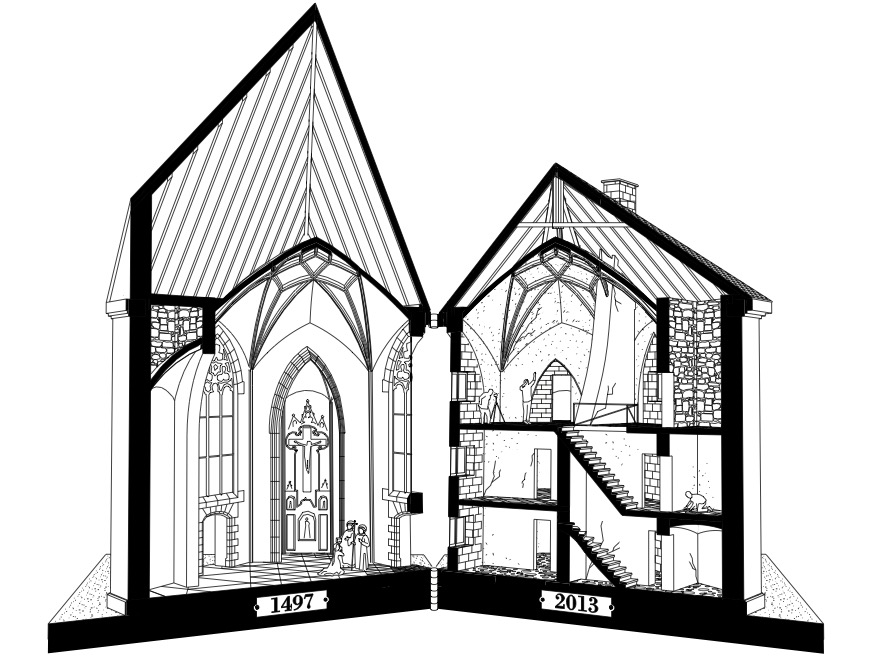
Heiligen-Geist-Kapelle Bruck an der Mur
Driving in Central Austria, leaving Bruck an der Mur, entering S6 Semmering Schnellstraße to Vienna you will pass a building that won’t attract your attention: Squeezed between the freeway interchange and the railway tracks is an odd, squat, small building with no discernible function, making little sense in this non-place.
But take the next exit, drive back and step out of your car: You will be standing in front of a hidden gem, an exceptional Late Gothic chapel with an impressive star cross vault and a varied history. Don’t let the barricaded, dull square windows and the chimney fool you, it is indeed a chapel.
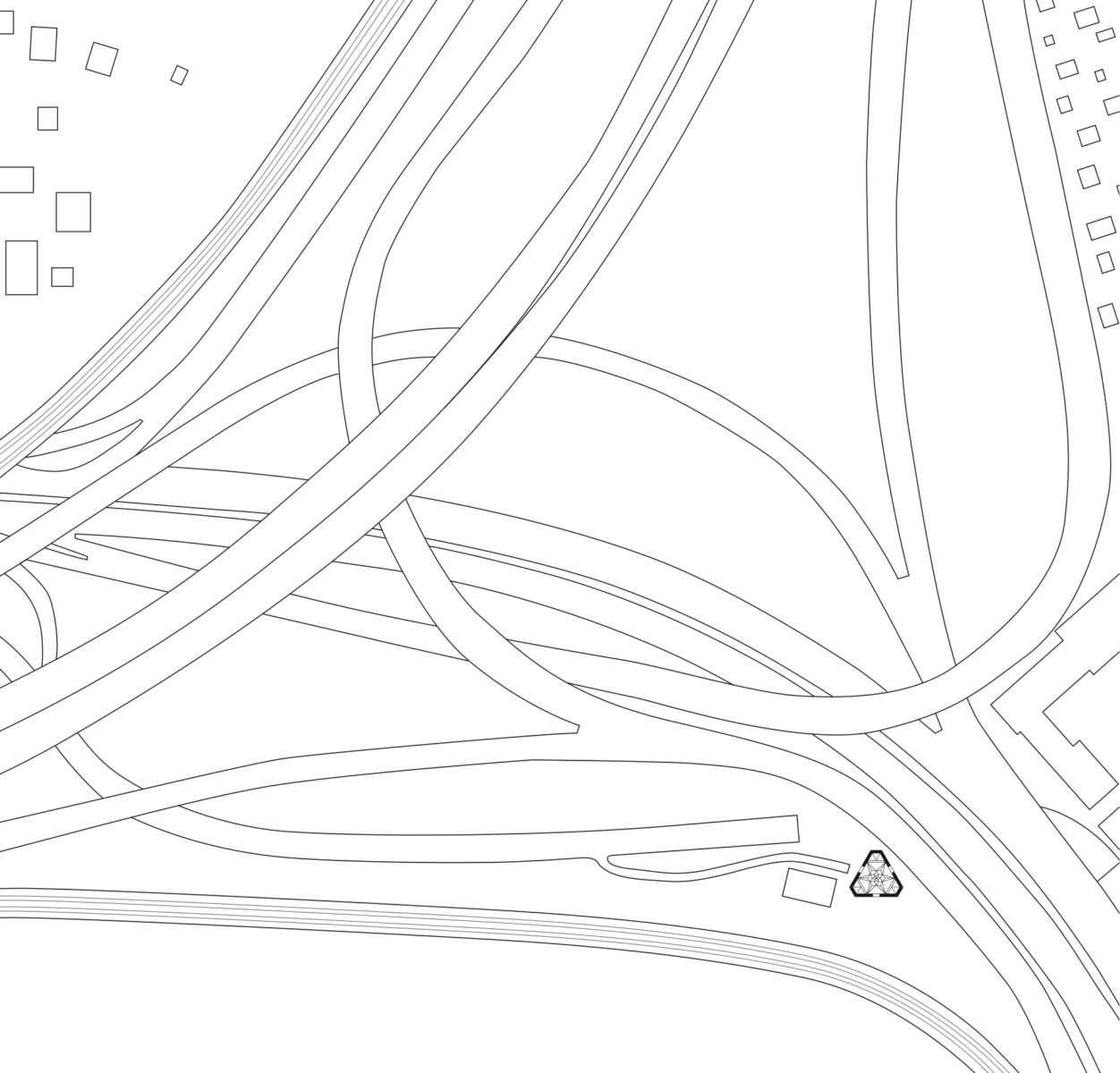
Built in 1497 on the site of a former plague infirmary at the edge of town, meant as a grateful gesture for the cessation of famine and plague, this chapel is unique in the Late Gothic period for its triangular floor plan. Unlike other Christian chapels or churches, the Holy Trinity Chapel does not have the typical East-West orientation and was originally built with three equally important altars – one in each corner, instead of a single High Altar. This rare feature represents the Holy Trinity, an important doctrine in Christianity. The resulting absence of direction, together with the tracery leading up to the cross vault emphasizes verticality and the connection to Heaven.
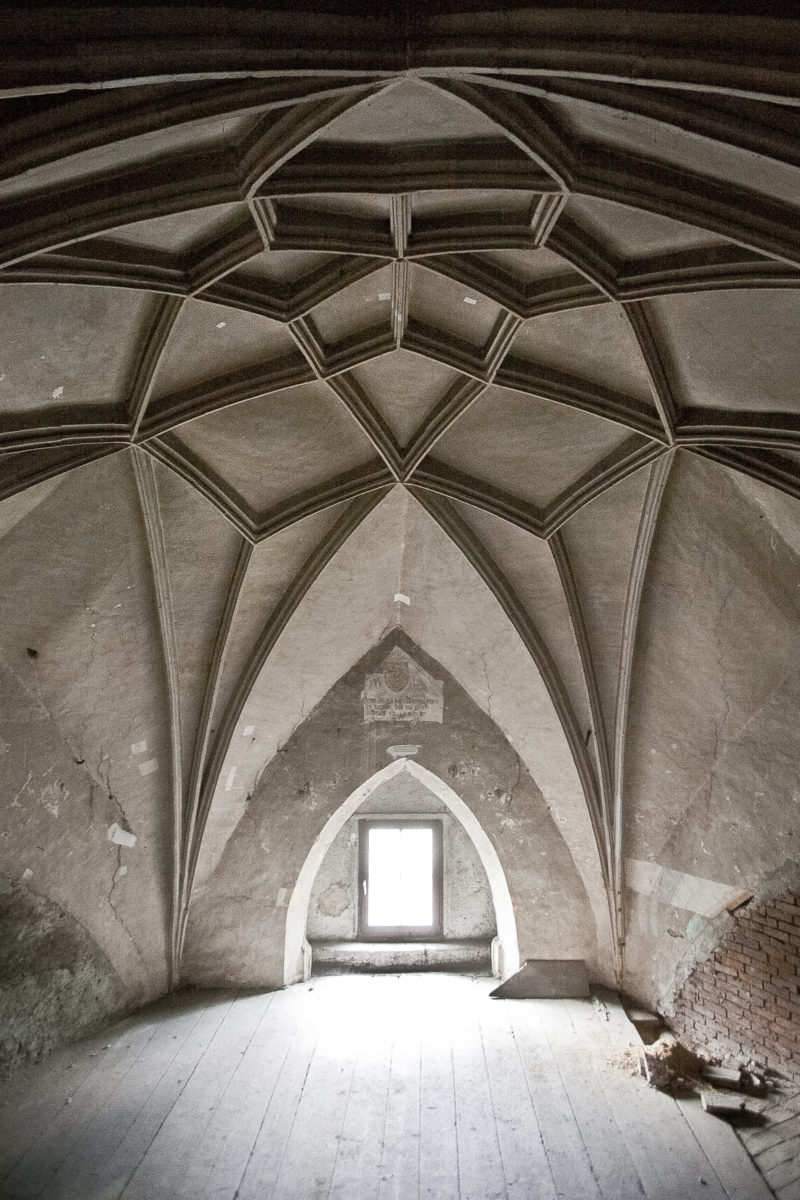
That was the initial concept, but then the story took a turn: Deconsecrated in 1794 for demolition after decades of neglect the chapel was instead sold for use as a barn. Two decades later it was sold again, this time to become a tavern. To convert the building a chimney was punched through the cross vault and roof, two levels and various walls were added and the large ogive windows were replaced by small rectangular windows. At some point the rafters were shortened and the roof rebuilt with a shallower pitch. Post WWII the housing shortage caused another transformation. The building was sold to the municipality and converted into apartments, which became public housing after the deterioration of the district caused by the new freeway interchange. Finally in 1999 it became empty.
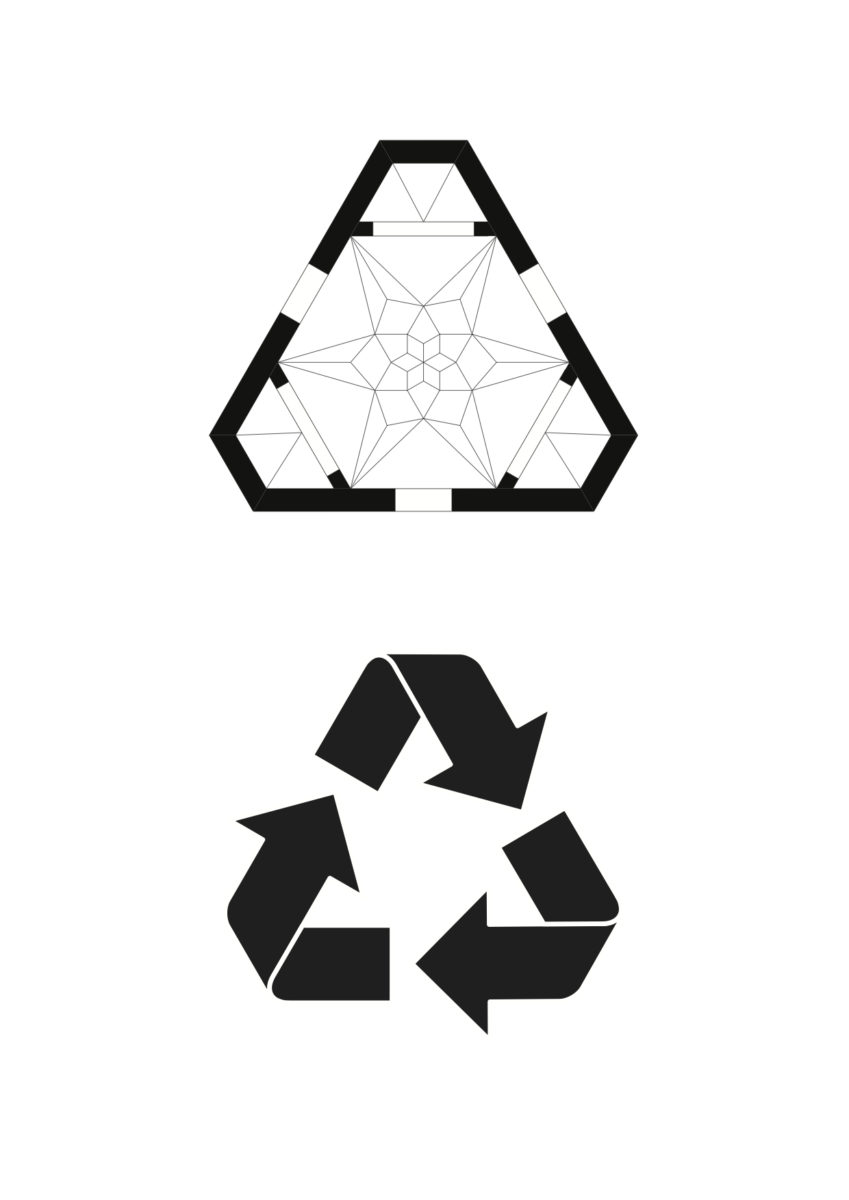
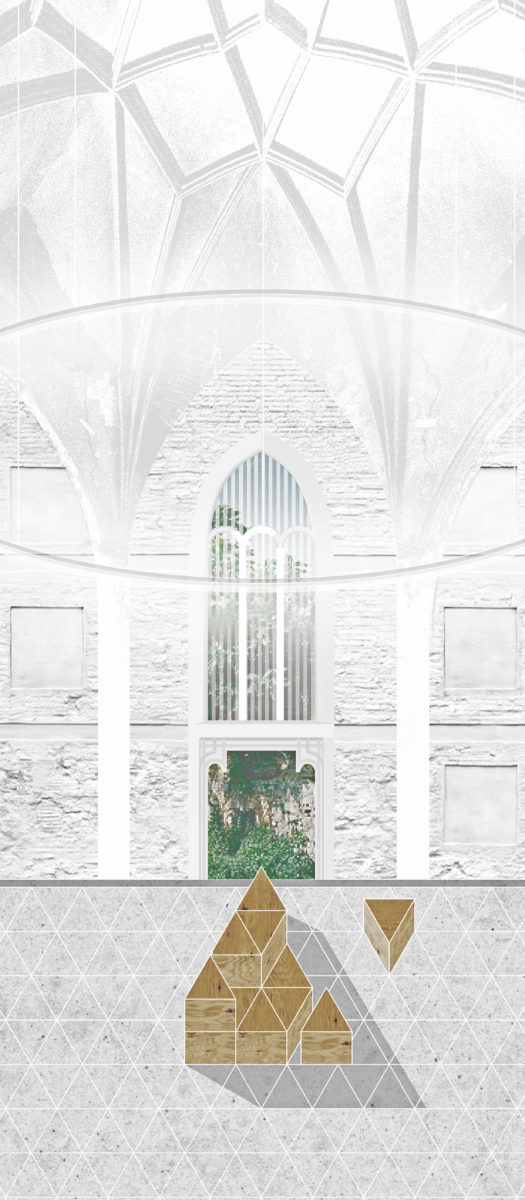
Throughout its history this building has had a faithful companion – the constant ignorance of its distinctiveness. It might have been exactly this ignorance that saved it. Every time a new nemesis approached, a new owner appeared to blithely convert the building averting its decay. Although the new function’s adaptions might not have been respectful to the chapel’s uniqueness they have repeatedly extended its life span. The fascinating history of this building shows that transformation can be an unorthodox yet successful form of preservation.
Today the spirit of the Holy Trinity Chapel lives on in something that appears to be less of a chapel and more of a weird abandoned house that waits once again for change.
Aus dem Artikel `PRESERVING IGNORANCE´der Zeitschrift CLOG der Ausgabe UNPUBLISHED.
Verfasst und Illustriert: Tobias Brown, Johannes Paar
Fotos: Johannes Paar